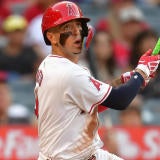There are still significant hurdles left to get past, but we're getting more concrete details about MLB's return-to-play proposals, and it sounds like the Players Association and the league are going to begin negotiations on what that plan will ultimately look like in the coming week.
That's no guarantee we'll have a deal by this time next week — or at any point — but these are the most concrete signs we've had that MLB is moving forward with the idea of playing baseball in 2020. There are still plenty of details to negotiate, but we have at least an outline of what things might look like, which means we can start to figure out what it might mean for Fantasy players.
Reporting over the last few days has centered around a handful of details, the following of which seem most pertinent for Fantasy players as we move toward the season:
- Regular season beginning in early July, 78-82 games
- An expanded roster of 45-50 players
- Universal DH
- Teams would face opponents only from their division and same geographic division in the opposite league. NL East team would face only the NL and AL East teams
We'll have plenty of analysis of what these details might mean for specific players, but I want to focus here on what it means for how you might want to set up your league for 2020, whenever it starts up. Specifically, how the schedule should be handled.
The typical Fantasy baseball season is something like 25-27 weeks most years, with most leagues typically beginning their playoffs sometime in August to avoid having to deal with expanded rosters and teams resting players down the stretch. That won't be as much of an issue in 2020 — or, rather, it will be an issue to contend with from Day 1, so you should just play through to the end. Most Rotisserie leagues already do this, but H2H points and categories leagues should follow suit as well and play right through to the last game. You're already dealing with a shortened season, so you might as well get as many games as possible out of it.
However, from there, things start to get a bit more confusing. Most H2H leagues just have one matchup for each team per week; the 25-week season allows you to play each opponent at least once. Assuming we get something like a 13-week season beginning in early July, you're looking at just a 10-week regular season if you want a three-round playoff. That's not enough matchups.
So, you can do what Frank Stampfl suggested on the Fantasy Baseball Today podcast Monday and set up weekly doubleheaders. In your 12-person leagues, that would mean 20 matchups before the playoffs, which is around what you'd typically get in a normal season. That's a perfectly reasonable idea, and one I would expect most H2H leagues will go with.
Let's assume that is the default. And then let's get weird. After all, the 2020 season is going to be unlike any other we've ever seen, no matter what proposal ultimately ends up being adopted. It's going to be a weird season with weird, outlier performances — Hanser Alberto and David Dahl were both in the top 11 in batting average at the end of June in 2019, while Jake Odorizzi had a 2.73 ERA — so you might as well embrace the chaos. Here's how:
Split it up
My favorite idea for how to handle the schedule is to follow the Eastern and Southern Leagues in the minors and adopt a split-season format. You could eschew the head-to-head aspect and simply go with the two teams that score the most Fantasy points in the first half of the season, and the two teams that score the most in the second half move on to the playoffs, and then you have the playoffs move ahead as a head-to-head schedule as normal.
Or, you can do a hybrid, splitting the season in half and award a playoff spot for the best record and the highest point total in both halves. Either way, you are creating a scenario where, if a team struggles to begin the season due to the unprecedented circumstances around the league, they aren't just done for. It incentivizes teams to keep active through the full season, and adds additional strategic wrinkles — if you've locked up a playoff spot by midseason, do you start targeting potential second-half breakouts or players dealing with injuries? You just might!
September Madness
Another idea Scott White mentioned briefly on the podcast was a potential tournament over the final month of the season, with the previous two months providing the seeding and bye week winners. This is another idea I love, because it gives every team a chance to compete for the title, even if they have a bad month to begin the season, while also rewarding those teams who managed the new circumstances best with a higher seed and/or bye.
In a 12-team league, for instances, you give the top-four seeds a bye and run a three-week tournament — 5 seed vs. 12 to play the 1 seed, 6 seed vs. 11 to play 2, etc.
Other considerations
The schedule isn't the only thing to consider when thinking about 2020. With expanded rosters, we'll likely see more prospects than ever make their debuts this season, especially since their teams will want them to get work with the minor-league season likely canceled. That means you might want to expand your own Fantasy rosters, both with additional bench spots and perhaps with an extra starting spot or two.
I would go with one extra pitcher and one extra utility spot in all formats, to account for the likelihood that a condensed schedule might mean fewer innings per start and more off days for position players throughout the season. Adding another starting spot will help account for the different way teams are likely to use their rosters. Plus, with the addition of the universal DH in the NL, you're going to have a deeper pool of available hitters to choose from.
Ultimately, this season is a good opportunity to experiment with your league to find out if there are more fun ways to play. No matter how opposed you are to change, there's nothing you can do that will make this a normal season for MLB or your Fantasy league. You might as well embrace that, and if you don't enjoy it, 2021 should see a return to normalcy.
The only exception to all of this would be for Dynasty leagues, where it's probably unfair to change rules mid-stream, even if just for one season. People have been building their teams with a specific set of rules in place for years, so it's best to stick with them.


















